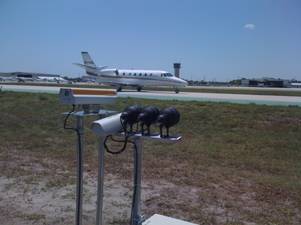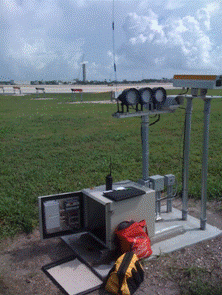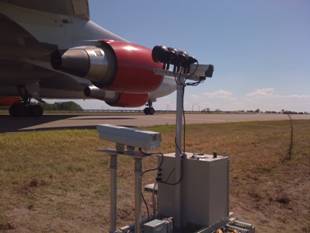Before the introduction of New Large Aircraft (NLA) such as the A380, preliminary research was completed to determine how these aircraft would operate on airports designed to Airplane Design Group (ADG) taxiway width V standards. It was found from a 1988 survey of US airports that may receive NLA service that reconstructing existing taxiways would cost half a billion dollars and all new ADG VI NLA taxiways at three quarters of a billion dollars. The survey was conducted in 1988 by ACI-NA and the FAA. The design standards for ADG VI were created over 20 years for safe NLA operations.
Over the past few years, data has been collected and is being utilized in the development of new statistical tools for analyzing and determining risk factors associated with NLA taxing operations on ADG VI airports. It was determined that measuring taxiway centerline deviations of Boeing 747s would provide the data necessary to support the development of the improved statistical risk assessment tools. Phase One of this project focused on main gear deviation at JFK International Airport and continued in Anchorage, AK at the Ted Stevens International Airport. This phase focused on re-verification of the taxiway width standard for ADG VI airports.
In 2003, Engineering Brief No. 63 was released by the FAA which allows the Airbus A380 to operate on existing standard ADG V (75ft wide) straight sections of taxiways, on an interim basis under specific limited conditions. In 2007, the Engineering Brief was updated (63b) which allows airports to impose taxing speed restrictions based on their unusual site conditions. Phase Two of this project focused on limited Separations and Object Clearance Standards. Data collection systems were installed at JFK International Airport and another system at San Francisco International Airport, CA to collect data on Group V and Group IV. The systems were similar to the previous ones at JFK and ANC, but included the addition of cameras that enabled visual verification of collected data points.
The current goal is to preform data collection on the remaining ADGs (ADG I- ADG IV) aircraft operating in their “corresponding” design group environment. The purpose of this phase of the study is to determine whether or not the current ADG taxiway width standards should be revised as well. Phase Three was initiated in 2008 by selecting several Airplane Design Group IV airports with corresponding aircraft activity. The system is able to record the deviation from the taxiway centerline, aircraft speed and model. The airports participating in this phase included: West Palm Beach International, FL (1 ADG IV system and 1 ADG III system), Orlando International Airport, FL, Chicago O’Hare International Airport, IL, and Manchester Boston Regional Airport, MA. All of these systems have been decommissioned, except for one of the PBI systems since it’s an ADG III location. Analysis has begun for the ADG IV data. Currently, ADG III and ADG II airports will be under evaluation under Phase Three. The ADG III system at PBI will continue to collect data, as well as locations at Salisbury-Ocean City Wicomico Regional Airport, MD, Key West International Airport, FL and White Plains/Westchester County Airport, NY.
Link for Engineering Brief 63b:
EB_63.pdf



Statistical Extreme Value Analysis Concerning Risk of Wingtip to Wingtip or Fixed Object Collision for Taxiing Large Aircraft
Final Report on JFK Taxiway Deviation Study - Phase One
Final Report on ANC Taxiway Deviation Study